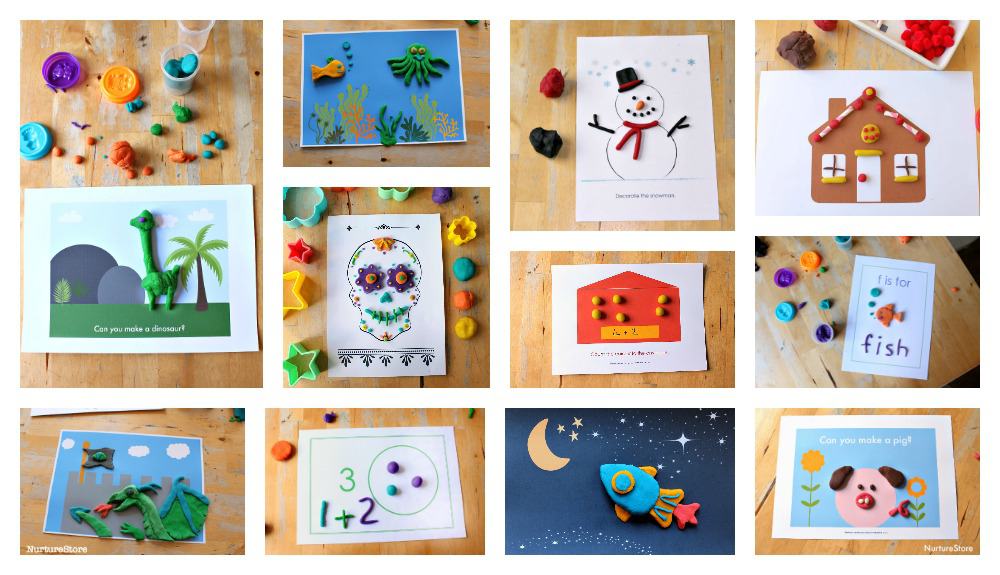Did you see we made some fall play dough last week? Today we’ve been using it to play some fun math games – great for hands-on, sensory learning.
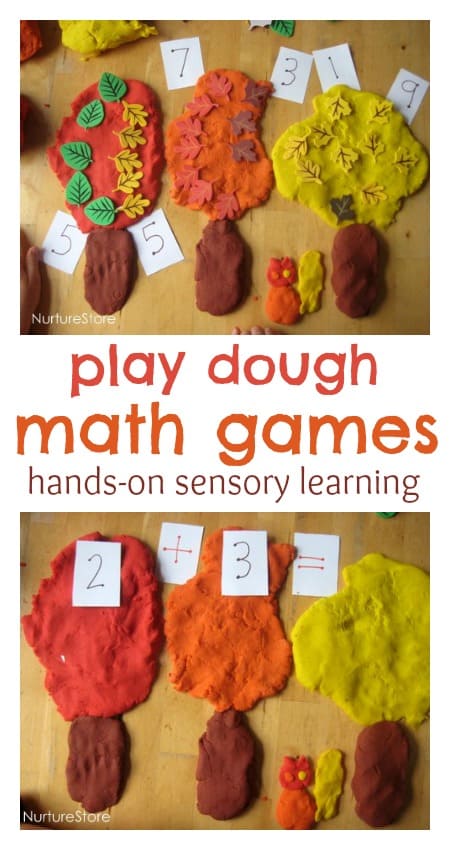
Fall play dough math games
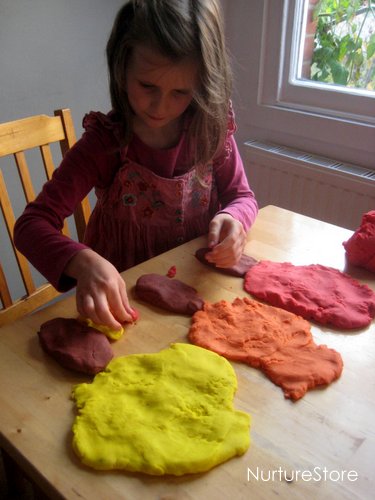
She started off by making herself a forest of autumn trees, and a little squirrel who she said was good at adding up!

I got some loose parts ready for our play. I made a quick and simple set of number cards and set out some autumn leaf stickers, which were from Hobbycraft. (I didn’t peel the backing off the stickers as we’ll use them again for another activity.)
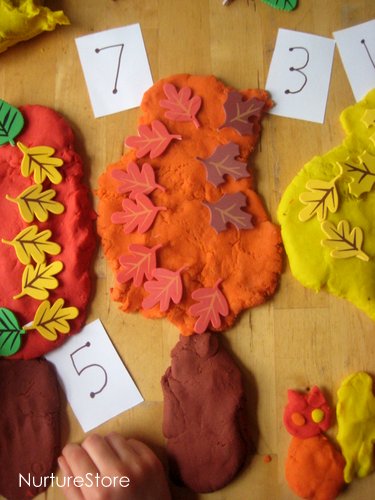
Number bonds to ten
One area my daughter is working on at the moment is exploring all the ways you can make ten, so we used this as our first game. Her squirrel collected a number of leaves on a tree, which my daughter counted and found the correct number card for. Then she worked out how many more she’d need to make ten, added the leaves, and found the number card to match.

When we were counting out each number, we made sure to stick with the same colour and shape of leaf for each one, which gave us a clear visual picture of the pairs of numbers across our forest – great for visual learners.
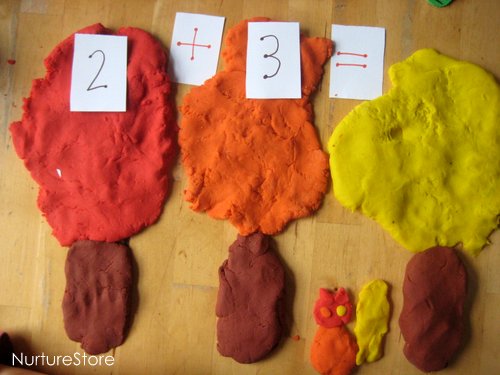
Number sentences
We also used our play dough forest to work on some number sentences. If the squirrel has two leaves on the first tree and three on the second, how many did he have altogether? Again, using the sticker leaves was a great visual cue to check the answers she worked out in her head, or to help with the sums that were trickier. And all the time she enjoyed the hands-on play and storytelling with her little squirrel.

To make this easier
If your child isn’t at this stage just yet, to make the math games easier you can work on simply counting. Place a number card by each tree and see if your child can recognise the number and find the matching number of leaves to place on each tree.
You could also work on increasing or decreasing your numbers. Place one leaf on the first tree, two on the second, three on the third…. Or start with ten leaves and work your way down.
You could also place some leaves on a tree and see if your child can work out what one number you’d have if you added one more.
To make this harder
If your child is already confident with this stage, to make the math games harder you can use more complex number sentences. Use bigger numbers, or try some multiplication or division. If you’ve got twenty leaves and you share them fairly between each tree, how many leaves does each tree have?



